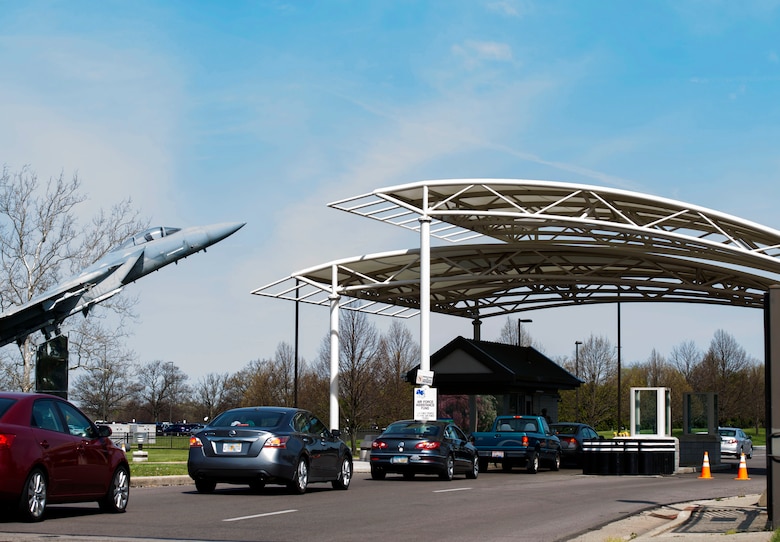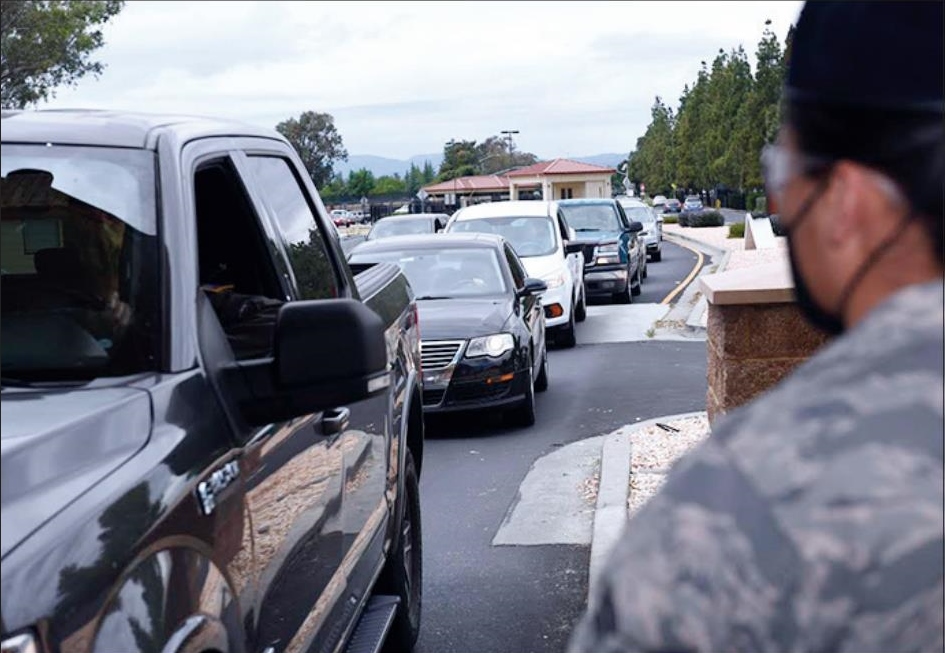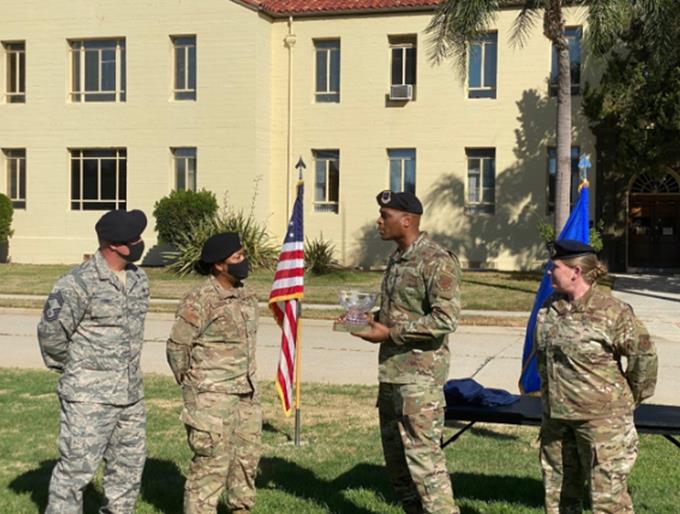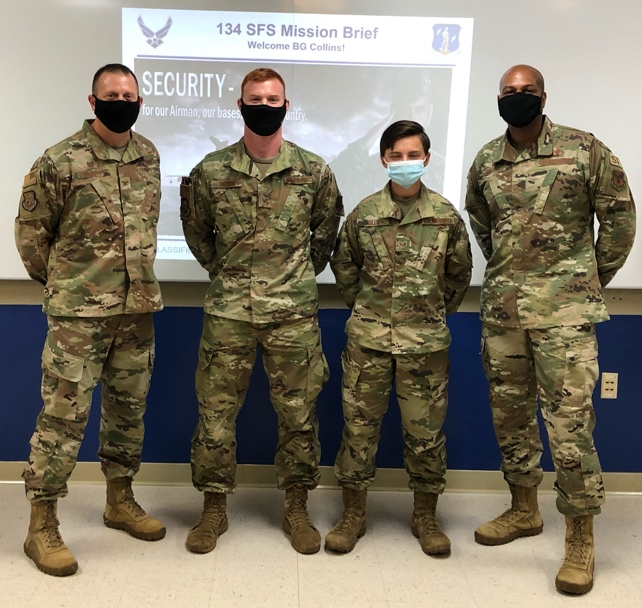 New Policy Allows Privately Owned Firearms on Wright-Patt AFB for CCW Permit Holders
New Policy Allows Privately Owned Firearms on Wright-Patt AFB for CCW Permit Holders
By Stacey Geiger, 88th Air Base Wing Public Affairs, 11 August 2020
Holders of a Federal Law Enforcement Officer Safety Act permit, Ohio concealed carry permit, or another state’s concealed carry permit that has a reciprocity with the state of Ohio, will be authorized upon approval to transport secured, privately owned firearms in their privately owned vehicles on to Wright-Patterson AFB. Registration will be implemented in three phases beginning August 17. (U.S. Air Force photo/R.J. Oriez)
WRIGHT-PATTERSON AIR FORCE BASE, Ohio – Base personnel will soon be able to request approval to transport licensed firearms to and from the installation.
Holders of a Federal Law Enforcement Officer Safety Act permit, Ohio concealed carry permit, or another state’s concealed carry permit that has a reciprocity with the state of Ohio, will be authorized upon approval to transport secured, privately owned firearms in their privately owned vehicles.
“We recognized that part of the population here was interested in seeing a change in our policy when it came to the transport of privately owned firearms on the installation,” said Maj. Julie Roloson, 88th Security Forces Squadron commander. “After much careful analysis, we established appropriate procedures to satisfy that intent without sacrificing the safety and security of the base.”
To be eligible, individuals must have a valid CCW permit, a valid Department of Defense identification card to include Common Access Cards, and must be either be Active Duty, Reserve, Guard, retired military, dependents 21 years or older and DoD civilian employees.
Implementation and registration will be conducted in three phases:
Phase 1: 17 August 2020, Active Duty Personnel
Phase 2: 15 September 2020, Guard, Reserve, and retired military
Phase 3: 15 October 2020, Dependents 21 years of age and older and DoD civilians
Individuals who wish to carry their POF on the installation must submit an Air Force Form 1314, Firearm Registration, sign a Statement of Understanding for Possession of POF. In addition, Security Forces Pass and Registration will validate all CCW permits and conduct a records check.
For Active Duty, Guard, Reserve and DoD civilians, individuals must complete and submit the AF Form 1314 to their unit commander or equivalent for authorization. Once approved, individuals will present the form to the Security Forces Pass and Registration office.
Retired military and dependents 21 years and older will need to go to the Security Forces Pass and Registration office to complete the AF Form 1314. Individuals must provide their name and an identification number such as social security, state identification card or driver’s license.
Authorizations will be valid for two years provided the individual remains qualified.
Further rules and guidance will be provided by Security Forces Pass and Registration during the POF registration process.
POFs may be registered with the 88th Security Forces Pass and Registration office located in building 286 in Area A. Registration hours are Monday through Friday, 2 to 4 p.m. For additional information, contact the Security Forces Pass and Registration at This email address is being protected from spambots. You need JavaScript enabled to view it. or call (937) 257-6246.
 USAF LEOSA Credentials Change to Indefinite!
USAF LEOSA Credentials Change to Indefinite!
Attention past and present Defenders, for the past 24 months, DCS has collaborated with the United States Air Force to facilitate service-required changes to the LEOSA credential. We are pleased to announce that going forward “all” Air Force credentials will be printed with the Air Force Security Forces Center address in lieu of personal home addresses. In addition, the 926C Retired/Separated credentials will no longer have an expiration date and will be printed with the word, “Indefinite.” All previously issued credentials are still valid. For those customers desiring to have credentials that reflect the recent changes, you may do a Service Request to have your credential updated. We thank you for your patience and cooperation, and as always, we continued to strive to take care of all our LEOSA customers. For more information visit the DCS LEOSA web site https://leosaonline.com/
Security Forces Airmen Enable Mission at Travis
TSgt James Hodgman, 60th Air Mobility Wing, Public Affairs, 29 May 2020, Travis Tailwind
Editor’s note: This is the first of a three-part series on security forces at Travis AFB.

U.S. Air Force photo/Airman 1st Class Cameron Otte U.S. Air Force Airman 1st Class Hannah Hoskins, 60th Security Forces Squadron entry controller, watches vehicles as they approach the main gate May 11 at Travis Air Force Base, California. Security forces Airmen at Travis AFB protect thousands of people and essential resources for three wings.
Imagine it’s Wednesday evening and you are a security forces Airman assigned to perform entry control duties at the main gate at Travis Air Force Base, California.
Suddenly, a vehicle approaches the gate on fire. You and your fellow defenders quickly find cover and report the incident. Soon the emergency control center informs you that backup is on the way, along with firefighters and the explosive ordnance disposal team.
This was the reality for Airmen assigned to the 60th Security Forces Squadron who were performing entry control duties at the main gate of Travis AFB March 21, 2018. Their swift response helped avert a potential catastrophe, as the vehicle never made it past the gate.
Security forces Airmen are responsible for protecting people and resources at Air Force installations in the United States and around the world.
“You never know what’s going to happen, so you always have to be alert,” said Airman 1st Class Hannah Hoskins, 60th SFS installation entry controller. “We have to be on our toes at all times.”
Another incident occurred in December 2017, just five days before Christmas.
“An individual sped through one of our gates at speeds nearing 100 mph,” said Tech. Sgt. Christopher Schultz, a 60th SFS flight chief. “We quickly dispatched patrols and apprehended the driver and four others.”
The patrols found alcoholic beverages, marijuana and a shotgun in the suspect’s vehicle.
Hoskins said security forces Airmen have a great deal of responsibility.
“We ensure our installation is safe at all times,” she said. “One way we do that is by denying base access to anyone who doesn’t meet entry requirements.
We also ensure traffic laws are enforced. With the coronavirus pandemic, we have implemented a number of measures to ensure the safety of our defenders and the public.”
The 60th SFS requires Airmen performing entry security to wear masks and gloves to prevent the spread of the novel coronavirus, protecting both defenders and visitors to the installation. Those defenders, who complete an average of 6,000 ID checks a day, use an electronic device to scan ID cards known as the Defense Biometric Identification System, said Schultz.
“Right now, we don’t physically handle ID cards,” said Airman 1st Class Jason Nguyen, 60th SFS installation entry controller. “Individuals hold their ID cards while we scan them with DBIDS.”
The system is one way security forces verifies base access for each person requesting entry, including civilians and contractors, Nguyen said.
Hoskins recalled an incident when an individual refused to turn his car around, after discovering the driver did not have the valid identification needed to access the base.
“He was angry and insisted he was going to drive through the gate,” Hoskins said. “I called for backup, and I had help there immediately. Eventually, he calmed down, and we briefed him about his license, as well as base entry procedures. Shortly after that, he drove away from the gate.”
The defenders at Travis AFB provide security for thousands of people and resources valued at approximately $11 billion. The security they provide helps enable successfully operations every day. Since Feb. 1, Team Travis, which is home to the largest mobility wing in the Air Force, has supported more than 500 missions.
Schultz stressed, that despite the pandemic, 60th SFS Airmen will continue to provide a safe and secure environment for Team Travis.
“Our Airmen at the gates are our first line of defense for the installation,” Schultz said.
“They keep a watchful eye for anything that may happen and that will not change. Often, they are the only experience people have with our base or the Air Force. They are highly trained and focused on ensuring the safety and security of our installation.
“Our No. 1 priority is securing our mission and protecting our people,” Hoskins added. “We have several assets at our base, and many Airmen and families call Travis home. We are family, and you never want anything to threaten your family. We are here to protect one another.”
MARCH AIR RESERVE BASE, CA, UNITED STATES

Story by TSgt Nick Kibbey, 1st Combat Camera Squadron, 20 February 2020
The Air Force Reserve Command announces the 452nd Security Forces Squadron as the 2019 Security Forces Base Operations Support Unit of the Year on February 7, 2020.
The award acknowledges the exceptional accomplishments and performance of the squadron in providing safety and security to March Air Reserve Base and the local community over the past year.
“We’ve had a busy year providing security for everything from an F-16 crash to deploying 90 defenders in support of operations in the Middle East,” said Senior Master Sgt. Ruben Lopez, the 452d SFS operations superintendent. “Our success is due to great communication, teamwork and the support of our leadership from top to bottom to put the mission first.
It’s the ability to put the mission first by every Airman that builds trust within the squadron to execute security objectives as professionals.
“We rely heavily on our training as Airmen to set us up for success in performing our mission, and I have full confidence in my team’s abilities,” said Maj. Jessica Wruck, 452nd SFS commander. “I’m extremely happy and proud to lead this squadron, and this award shows that it’s not about the effort of one individual, but a testament of accomplishment by a true team.”
The 452nd SFS won the award for the AFRC and now competes at the Air Reserve Component level, which includes Air Force Reserve and Air National Guard forces, for top honors in the Air Force.
UPDATE:
Defender Nation – please join us in congratulating the 452d Security Forces Squadron as the AFRC 2019 Unit of the Year Award winners, March ARB, CA. Was able to finally get out and make the presentation even with the COVID challenges. Huge congrats to this team and team March!
v/r Brig Gen Collins
134 SFS Defenders Win at the Army’s Best Warrior Competition

“Defender Nation…please join me in congratulating these Defenders at McGhee Tyson ANG, TN from the 134 SFS! SSgt Cody Watson won 1st place and SSgt Kourtni Giles placed 4th overall at the Army’s Best Warrior Competition held in Tullahoma, TN 26-28 June! HUA!”
VR – Brig Gen Collins
Page 18 of 51


